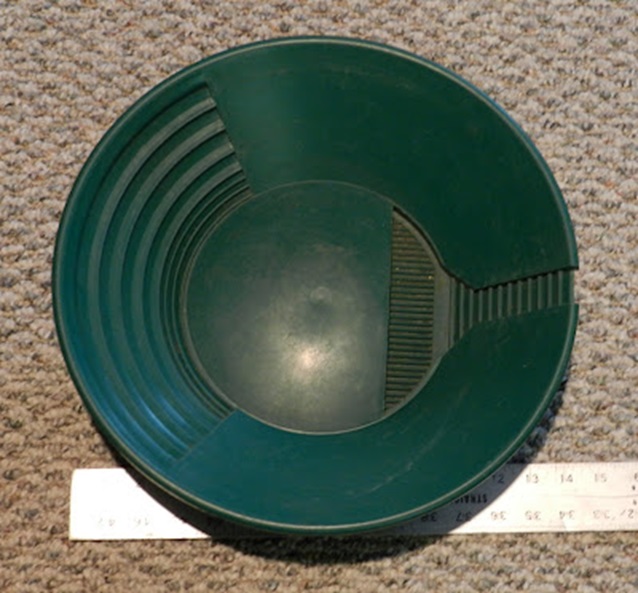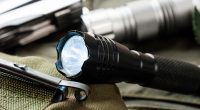5 Important Things to Consider When Choosing Your First Gold Pan
Gold panning is a very popular activity in Australia. Our country is filled with places where you can find gold. For some people this is a hobby and for some, it’s a full-time job. If you’re a beginner and don’t know where to start, the first thing you should do is buy a gold pan. That’s the main tool you’ll need to get you started.
How to Choose a Gold Pan

Size
The first thing you should think about is the pan’s size. These pans are usually made of lightweight materials and don’t weigh much on their own. However, when you fill them with water, rocks and (fingers crossed) gold, they’ll get heavier. This is where the size can make a difference. There are plenty of beginner-friendly gold pans for sale that won’t weigh much because of their size.
A larger one can have a diameter of around 30–60 cm. You might want this size if it’ll be your primary source of processing material. The larger the pan, the more material you can process. However, this might not be the best option if you’re just beginning because it will be too large for your unskilled hands.
As a beginner, you should start with a 35-40 cm pan. These pans are made to be the perfect balance between usability, capacity, and portability and are perfect for every gold panner. There are of course, smaller versions 25–30 cm in diameter, but they’re mainly made for children.
There’s a way you can measure what pan size is most suitable for you. Grab the pan and put it against your forearm. If the pan’s widest part gets past your fingers, you should get a smaller one. Buying a pan that’s too large for your hands can lead to muscle strain and pain and will make you feel uncomfortable.
Riffles
The riffles weren’t always a part of the gold pan because in the beginning they were made of metal and had a plain design. The riffles came when manufacturers started making plastic pans. They are there to trap the gold while letting the pebbles and sand drain away. As the gold gets to the bottom and you swirl the contents, it gets stuck inside and doesn’t go out with the pebbles and sand.
The riffles give you a lot of flexibility and have different purposes. Larger riffles are better when you’re dealing with river rocks and pebbles. They’ll trap bigger nuggets but won’t hold on to the smaller pieces. This is the reason why people don’t use them for panning concentrates. If you’re on the hunt for smaller flakes, smaller riffles will be perfect. They’re a good choice when you’re dealing with sand and concentrates.
Colour
When it comes to colour, the most popular one is green. It’s the one that’s most recognisable. But recently manufacturers have made pans in many different colours. The green one is still the most common because it has a contrast against the gold. But there are cases where the pan blends in with the grass and people forget it at the location.
Black is also an option. Although it does a fantastic job of highlighting the gold pieces, black sands often cover them. Some gold hunters prefer the blue pans. They’re great at showcasing the gold bits and accentuating black sand so you’ll quickly see the difference. Two other colours that are becoming more and more popular are purple and pink. This is because they’re vibrant, unique and fun to work with.
Material
The gold pans for sale can be made of two materials, plastic and metal. The panning world is often divided on this subject, which material is better? Pans made of metal are timeless and considered a classic. Despite being the first panning device, they have several problems.
First of all, if you constantly soak the metal in water, it will rust. Second, the whirling of the sand and gravel will quickly damage them, and damaged pans make it difficult to spot gold. You can also have a problem separating the gold from the metal because they bond to each other. You’ll have to use a magnet to do so.
Plastic pans, on the other hand, are a great choice for any panner no matter the experience and age. They are incredibly lightweight, strong, and really hard to crack or bend. Because they’re lightweight they’ll float and you won’t have to look for them at the bottom of the water. But the most important thing is that they won’t rust no matter how many times you dip them in water.
Other Considerations
When you want to buy a gold pan, it’s always a good idea to set a budget. This will help you narrow down the choices and make the whole buying process much simpler and faster. But if money isn’t a concern, then go for it, invest in the best possible pan in the market. Always buy from a reliable and trustworthy brand. Explore the market, do some research and choose a brand that has plenty of satisfied customers.
The majority of brands offer product warranties, so if something breaks while you’re panning, they’ll replace it or fix it for free. Always explore other people’s opinions and experiences. They are going to point you to the best product on the market. When you find the pan, make sure it’s easy to use and comfortable to hold. If it’s not, you’ll get frustrated and abandon the whole gold endeavour.
The Best Places to Find Gold in Australia
Australia has plenty of places where you can start your gold panning adventure. You can start your panning adventure at a variety of locations around Australia. One of them is Kalgoorlie in Western Australia. Despite its 127-year existence, it continues to give panners an excellent amount of gold. The best time to start there is autumn or winter.
The Golden Triangle in Victoria is another popular option. This well-known region gave us the biggest nugget in the world in 1869. Gympie, Queensland, is easily accessible and has gold in the waterway, shale rock pile, and creek bed. We also have Clermont, Queensland, which is an excellent starting point for beginners. Corinna, Tasmania is a bit further and in the wild but a lot of people found lots of gold in the area.



